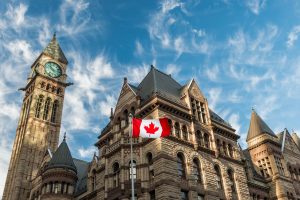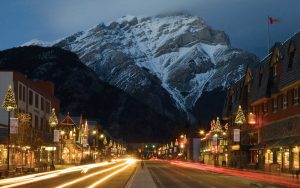Canada is the second (after Russia) country in terms of area. In the south and northwest, the country borders the United States, and their border is the longest in the world between countries.
Canada dates back to 1534. Founded by the French explorer Cartier, it was part of a French colony inhabited by local peoples (Indians). That is why Canada is currently a bilingual country where English and French are the official languages. The name of the word “Canada” comes from the word kanata (the language of the ancient Indians), whom Jacques Cartier met in their camp, and means “village”, “settlement”.
English and French and translate sunda are recognized by the Constitution of Canada as “official”. This means that all laws at the federal level must be made in both English and French, and that federal services must be available in both languages. Signs, names – everything is duplicated in two languages.
In Canada, there is such a thing as “home language”, that is, the language spoken at home (mother tongue). Currently, about 70% of Canadians speak English at home and about 20% speak French. About 17% of the total population of Canada are bilingual (that is, those who are fluent in both languages).
It can be said that, first of all, Canada is an English-speaking country, but only in one Canadian province of Quebec, more than 90% of its population speaks French. The indigenous inhabitants of the country (about 250 thousand people) have preserved about 20 ancient languages and dialects, which they continue to communicate.
In general, Canada has a lot of English accents. This is due to the fact that the Atlantic coast of the country where the fishermen worked, before the advent of transport and telecommunications, existed in some isolation from the big world. Therefore, in almost every settlement that is not very far from each other, it may be difficult to understand the inhabitants of these settlements.
In the 21st century, there is a demographic crisis in Canada. Given that the average duration in the world is the h

ighest, the country’s population is “aging”. And the country’s standard of living is so high that the younger generation does not particularly strive for self-development and the realization of their professional qualities. Therefore, Canada is happy to accept immigrants, provided that they will be useful to the country. To solve this problem, Canada has implemented many programs to attract foreign citizens.
Plan for immigration in Canada – 300 thousand people a year. In recent years, the influx of immigrants does not exceed 200-250 thousand per year. Therefore, everyone has a chance.
Education in Canada is affordable and of high quality. Diplomas of graduates keep the rating on a par with British and American educational institutions and have authority around the world. For legal immigrants, free healthcare, pensions and benefits for disabled citizens are also available. For children, free additional educational lessons are additionally provided.
The Center for International Communication “YazykPlus” invites you to an exciting gaming event Canadian taste of travel.
The teams will have a “journey” across Canada. At each station, participants need to “earn” hockey pucks. The more hockey pucks you get, the better. All of them will be useful to us during the hockey tournament.

